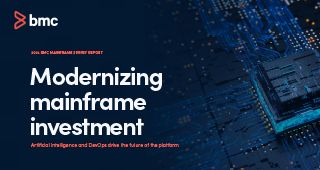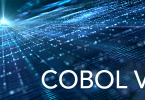If you are still using a legacy VTL/Tape solution, you could be enjoying better performance by sending backup and archive copies of mainframe data directly to cloud object storage.
When you replace legacy technology with modern object storage, you can eliminate bottlenecks that throttle your performance. In other words, you can build a connection between your mainframe and your backup/archive target that can move data faster. You can think of this as “ingestion throughput.”
Here are the top three ways you can increase ingestion throughput:
-
Write data in parallel, not serially
The legacy mainframe tapes used to make backup and archive copies required data to be written serially. This is because physical tape lived on reels, and you could only write to one place on the tape at a time. When VTL solutions virtualized tape, they carried over this sequential access limitation.
In contrast, object storage does not have this limitation and does not require data to be written serially. Instead, it is possible to use a new method to send multiple chunks of data simultaneously directly to object storage using TCP/IP.
-
Use zIIP engines instead of mainframe MIPS
Legacy mainframe backup and archive solutions use MSUs, taking away from the processing available to other tasks on the mainframe. In effect this means that your mainframe backups are tying up valuable mainframe computing power, reducing the overall performance you can achieve across all the tasks you perform there.
You do not need to use MSUs to perform backup and archive tasks. Instead, you can use the mainframe zIIP engines—reducing the CPU overhead and freeing up MSUs to be used for other jobs.
-
Compress data before sending it
Legacy mainframe backup and archive solutions do not support compressing data before sending it to Tape/VTL. This means that the amount of data that needs to be sent is much larger than it could be using modern compression techniques.
Using modern techniques, it is possible to compress your data before sending it to object storage. Not only do you benefit from smaller data transfer sizes, but you can increase the effective capacity of your existing connection between the mainframe and storage target. For example, compressing data at a 3:1 ratio would effectively turn a 1GB line into a 3GB line—allowing you to send the same amount of data faster while still using your existing infrastructure.
Faster than VTL: Increase mainframe data management performance
Replacing your legacy VTL/Tape solution with a modern solution that can compress and move data to cloud-based object storage can significantly decrease the amount of time it takes to back up and archive your mainframe data, without increasing resource consumption.
Writing in parallel, leveraging zIIP engines, and employing compression are low-risk, high-reward options that leverage well-known, well-understood, and well-proven technologies to address a chronic mainframe challenge. This can yield immediate, concrete benefits such as reducing the amount of time it takes for you to backup and archive your mainframe data and cutting costs while boosting capabilities.







